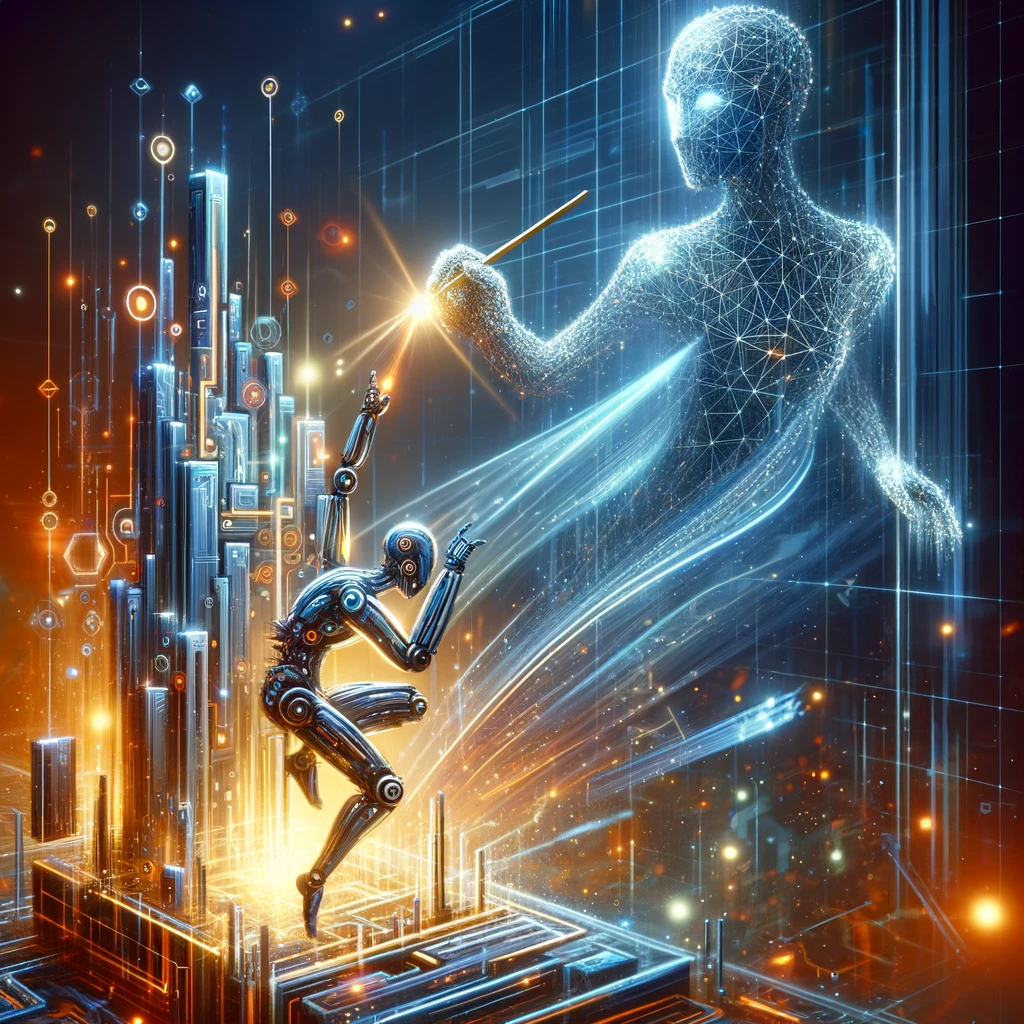Table of Contents
Introduction
How AI is Transforming Software Engineering:
In the rapidly evolving software landscape, the ability to deliver innovative features swiftly and efficiently is crucial. Artificial Intelligence (AI) stands at the forefront of this revolution, offering an array of tools and techniques that are transforming the feature development process.
Popular AI Tools for Streamlining Workflow:
GitHub Copilot:
This AI assistant, powered by OpenAI Codex, not only suggests code completions and entire functions but also adapts to different coding styles. It’s trained on a vast array of open-source code, making it versatile across various programming languages.
OpenAI Codex:
Beyond generating code from natural language descriptions, this tool supports over a dozen programming languages, significantly reducing coding time and effort.
MLOps Platforms:
Platforms like TensorFlow Extended and MLflow go beyond automating the deployment and management of AI models. They also assist in AI model updates management, monitoring experiments, and ensuring model reliability in production.
AI-powered Design Tools:
Figma and Adobe XD leverage AI not just for suggesting layouts but also for features like auto-animate and responsive resizing, which streamline the UI/UX design process.
Data Analysis Platforms:
AI integration in platforms like Tableau and Looker extends to predictive analytics and natural language querying, enabling more intuitive and insightful data exploration.
Strategies for Seamless AI Integration:
Start Small:
Begin by integrating AI into specific tasks or projects, then gradually expand its utilization.
Choose the Right Tools:
Select AI tools that specifically address your needs, considering factors like compatibility and scalability.
Build a Data-Driven Culture:
Foster an environment where data collection and analysis are integral, providing essential information for AI models.
Upskill Your Team:
Invest in training programs to equip your team with the necessary skills to leverage AI tools effectively.
Monitor and Adapt:
Continuously evaluate the effectiveness of AI integration and be ready to adjust strategies in response to new developments and insights.
Case Studies: Real-World Success Stories:
Netflix:
Their personalized recommendation algorithms have been reported to significantly increase user engagement.
Airbnb:
AI-powered price optimization tools have helped in maximizing booking revenues.
Uber:
The use of AI for dynamic pricing and demand forecasting has been instrumental in reducing wait times.
Spotify:
AI-curated playlists are a key factor in increasing user listening time.
Amazon:
AI-driven product recommendations and targeted advertising have notably boosted sales.
The Future of AI-powered Feature Development:
AI-driven Design:
AI will increasingly influence user-centric interface design, making applications more intuitive and engaging.
Personalized Features:
Expect a surge in features dynamically tailored to individual user preferences and behaviors.
Predictive Development:
AI’s ability to anticipate user trends will enable developers to create features that meet future needs proactively.
Extensive-automation:
A significant portion of the feature development process will be automated by AI, allowing developers to focus more on creative and innovative tasks.
Embrace AI to Unlock Potential:
Efficiency:
AI integration can potentially reduce development time by significant margins.
Quality Improvement:
Expect enhancements in feature quality, driven by data-informed decision-making.
Productivity Boost:
Developers can experience increased productivity, thanks to AI-assisted coding and testing.
Personalization:
AI enables the development of features that cater to individual user needs.
Predictive Capabilities:
AI’s predictive analytics can inform the development of future-oriented features.
By harnessing the power of AI, the future of software development is poised for unprecedented growth, marked by faster, more efficient, and user-centric feature creation.
Read More:
AI to the Rescue: Building Features Faster and Better with AI. (aiamigos.org)
https://www.aieducationforkids.com/generative-vs-discriminative-models
AI Evolution: 13 Breakthrough Stages from Rule-Based Systems to Quantum Wonders
Generative AI Solutions: 13 Proven Steps to Unleash Powerful, Innovative Tech
Refer:
https://en.wikipedia.org/wiki/Generative_artificial_intelligence
https://en.wikipedia.org/wiki/Artificial_intelligence


